Which memory card should you choose for your camera?
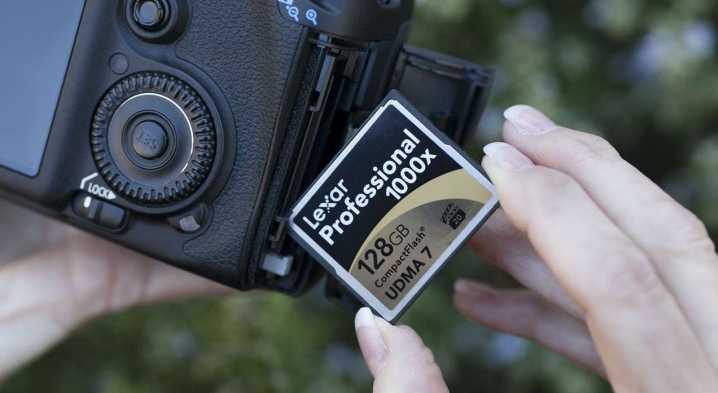
The advent of digital cameras over the past twenty years has made it possible to almost completely supplant the old film technology - “digital”, whatever one may say, turned out to be more convenient and practical, if only because it can also shoot video at the same time. The storage of the footage is provided on a drive, which is almost always removable for more convenience in transferring information. Meanwhile, the variety of flash drives on the modern market is so great that an inexperienced consumer can easily spend money on a product that will disappoint him. To prevent this from happening, let's try to delve into the principles of choosing drives.
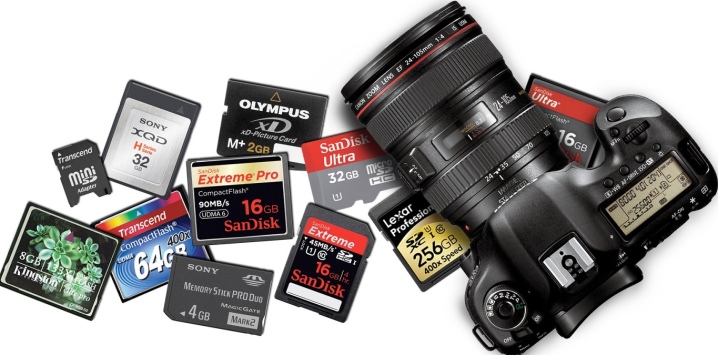
Peculiarities
A memory card for a camera, as a rule, is not included in the package, and the consumer himself chooses how much flash drive he needs. Moreover, in the process of use, he can change flash drives as they wear out, or in order to further expand the amount of memory. Thanks to the card reader, you can connect the flash drive to your computer directly and view or copy the footage.
Some models of digital cameras may have a built-in storagebut this is rare. More often, there is another option - the device still has memory, but it is enough for literally a dozen pictures so that a potential buyer can evaluate the quality of the photo. In any case, you should not focus on the built-in flash drive, and sometimes its replacement becomes a problem. If there is one, this can be considered a good bonus, but only if a memory expansion slot is also present.
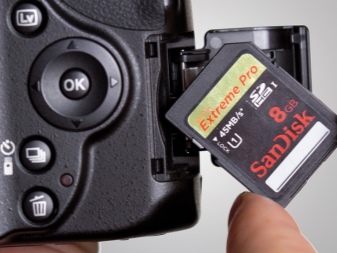
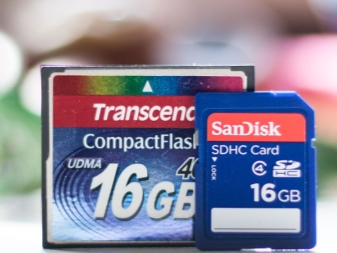
Flash drive is a very broad concept, theoretically numerous models of flash drives are suitable for it.mutually incompatible with each other.
This means that in the process of purchasing a camera it is worth clarifying what kind of memory card it requires - the answer to this question in general may force you to abandon a particular camera model.
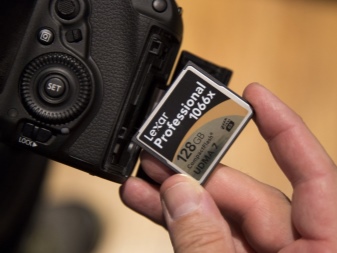

Species overview
When choosing a good memory card for your camera, you need to start by making sure it is the right one for your model. Card manufacturers have not yet come to a single standard, therefore Let's take a quick look at all the main types of drives that are still in demand today.
SD Cards
This type of flash card is the most popular - it is used not only by most cameras, but also by most smartphones. Secure Digital (this is how the abbreviation for cards stands), having existed for over two decades, have been able to outlast many competitors. Wherein this type of card is not yet a standard, but a common name for several standards, each of which has its own specifics.
- Actually SD, without further clarification. This is the classic with which it all began and today you probably will not meet it. There are two reasons for this: first, the card is physically quite large (about like two fingernails on a thumb), and its maximum volume is only 4 GB.
Some modern card readers are still designed for this standard, and smaller flash drives are accepted through an adapter in the form of a classic SD card.
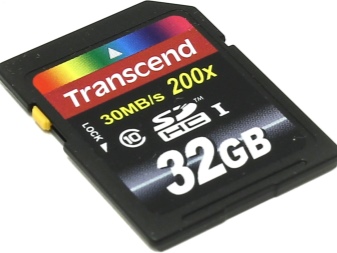
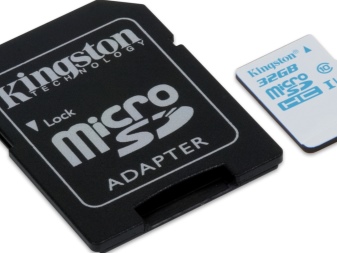
- SDHC, aka SD High Capacity. This version of the flash drive is also not very popular, but it is still more common. In terms of size, this is the same "classic", but by the time of its appearance the technologies had gone quite far, which made it possible to place up to 32 GB of memory on the same chip area. Such a drive supports the FAT32 file system, and therefore is "friendly" with older versions of Windows.
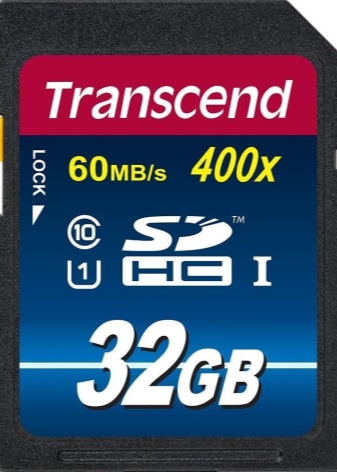
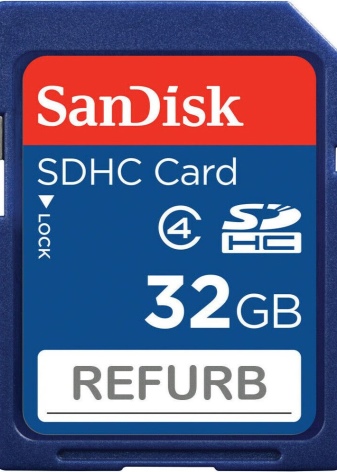
- SDXC, aka SD eXtended Capacity. As the name suggests, the capacity here is even greater - today it can already reach 2 TB and continues to grow. The size in such conditions, of course, simply could not decrease. To process such an impressive amount of information, the speed qualities of the drive were significantly improved by the developer of the standard.
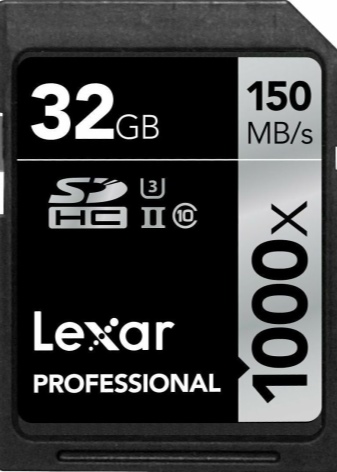
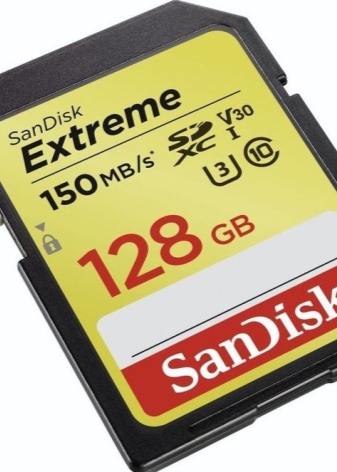
- Eye-Fi. A rather rare version of a flash drive, which at the same time has a built-in module for connecting to wireless networks. Thanks to this engineering solution, you can instantly send footage to anyone over an available Wi-Fi network. The camera for this, of course, must have the appropriate functionality in order to issue a command.


- MicroSD. The standard was once created specifically for compact gadgets - smartphones, action cameras, compact cameras and tablets. Today it is perhaps the most common standard in digital technology in general. The volume of such a drive can be several hundred gigabytes, but it is much smaller in size than its predecessors.
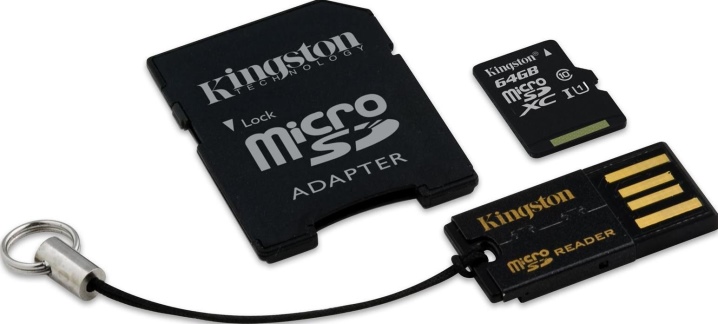
Compact Flash
The main competitor of SD and microSD drives is now Compact Flash. - at least in the segment of cameras, this is the second most common option. It should be noted that he meets many times less often than the leader, but this does not mean that the "compact" is worse, rather the opposite. At one time, it was ousted from the consumer market due to the fact that such flash drives, like the cameras supporting them, were much more expensive, because today this flash drive can only be found in a very old amateur camera. Whether it is a professional branch, where Compact Flash has not lost its relevance until now.
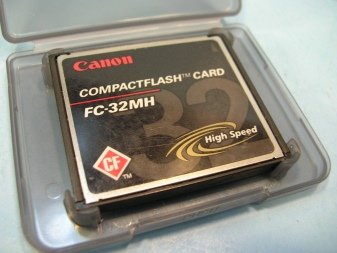
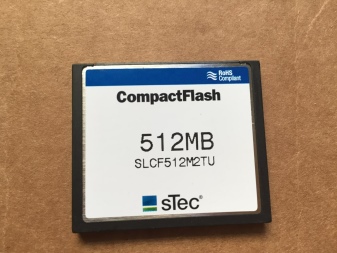
The respect of professionals for this standard is due to the technical characteristics issued to them. So, such a flash drive allows write speeds up to 440 Mb / s, and can read data even faster - up to 515 Mb / s. At these speeds, you can work with videos and photos of the highest quality without wasting time. At the same time, the volume of the memory card will not be the largest - today such flash drives are usually designed for 64 or 128 GB.
The very same equipment, even designed to work with the Compact Flash standard, may not support such a data transfer rate as that of the latest technology sample.
To achieve the set speeds, the camera must provide direct memory access - UDMA. If the unit does not know how to do this, then you should not rely on the speeds described above.
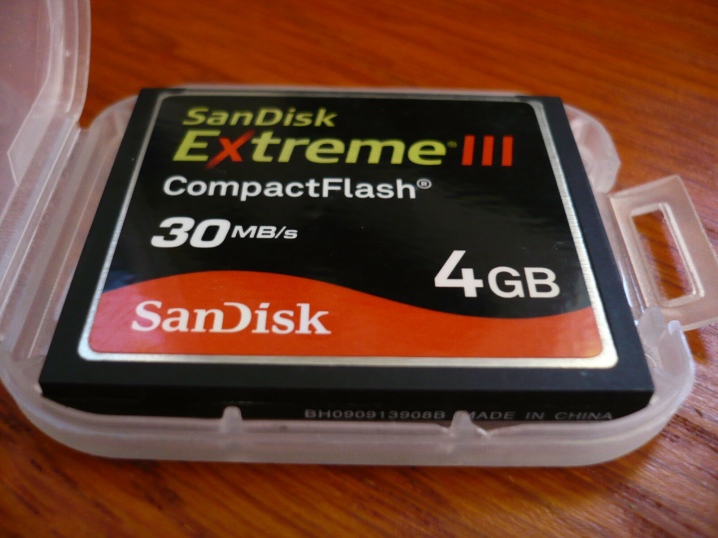
Native types
Some camera manufacturers do not at all seek to participate in standardization and develop their own models of flash drives, which do not fit anywhere except for the camera of this brand. While some of the good properties of the drive compensate for the lack of versatility, others, with their persistence, bring to the point that the developed standard is not in demand, which reduces the demand for the camera itself.
An example of the second case is the xD-Picture flash drive, which at one time was the norm for Fuji cameras. Over time, users voted against this standard with a ruble - with its merits, it hurt the consumer's pocket. Today, such drives and cameras with them are rare.
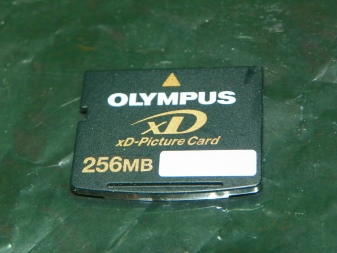
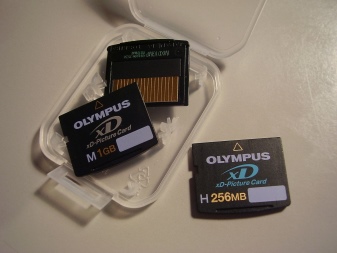
Whether it's the case Nikon, which also has its own flash drive standard - XQD... This flash drive, although it is not cheap, is "sharpened" for professionals - it quickly writes and reads data, has an impressive memory capacity. It also came from the wrong brand that will be quickly turned away - Nikon has long been recognized as one of the two trendsetters in photography.
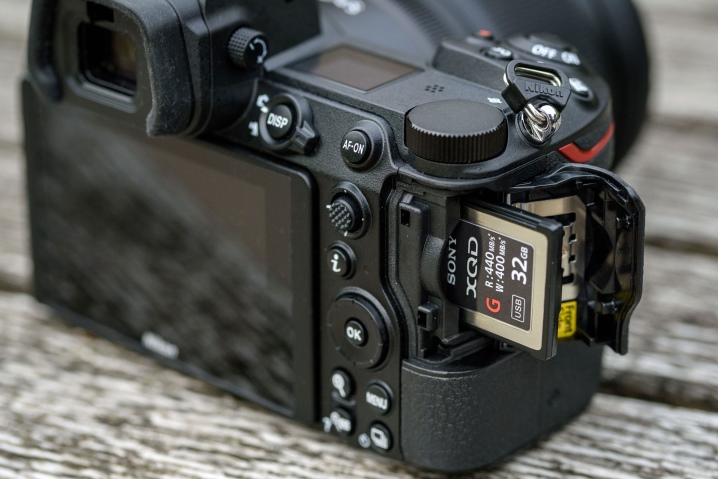
Memory Stick Duo is another relatively rare memory card standard. Originally developed by Sony, it has occasionally been used in smartphones and cameras from other companies.
Such flash drives cannot be called bad, but over time they began to yield more and more to standardization, the leader of which was the SD described above and its varieties.

Top Models
It would be pointless to make any rating of flash drives for cameras with the allocation of seats - as we already understood, they are not interchangeable. Instead, we decided to make a certain top without occupied places, which included popular drives of different types, tested by millions of users and years of use. For each, we will indicate the approximate current price and the reason why this model deserves a place in the top.
- Transcend TS32GCF133 - the best option for amateur and semi-professional photographic equipment. With 32 GB of memory, it costs only a little more than 2 thousand rubles, and writes at a speed of 18 MB / s. The standard of the Taiwanese-made drive is Compact Flash.
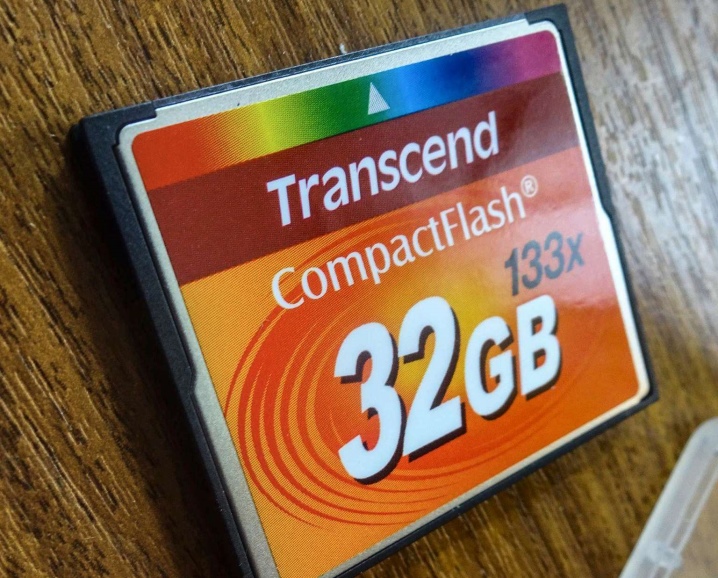
- SanDisk Ultra SDXC Class 10 UHS-I 80MB / S 128GB - super durability and reliability. Classic SDXC with impressive write speeds up to 80MB / s. Even a professional photographer will feel confident with such an accessory, except that it will not be enough for a reporter, but even then not very much, but only for a lover of super-quality photos. An American product costs only 2.2 thousand rubles, a guarantee for it is 10 years. In case of premature failure, the media will be replaced!
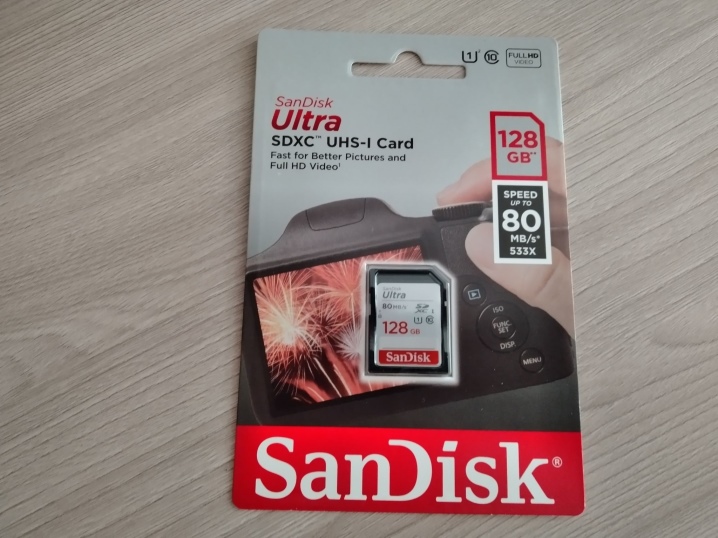
- Samsung MB-MC128GA Is a sales leader. Good microSDXC card for 128 GB, which is sold with an adapter to SD. The drive writes up to 90 MB / s, but consumers claim that the South Korean manufacturer is still modest in its assessment.

- Transcend TS64GCF800 - the best price for Compact Flash. The cost is impressive - more than 3 thousand rubles, especially for 64 GB, but this is a professional model, perfectly compatible with cameras with direct recording to a memory card.
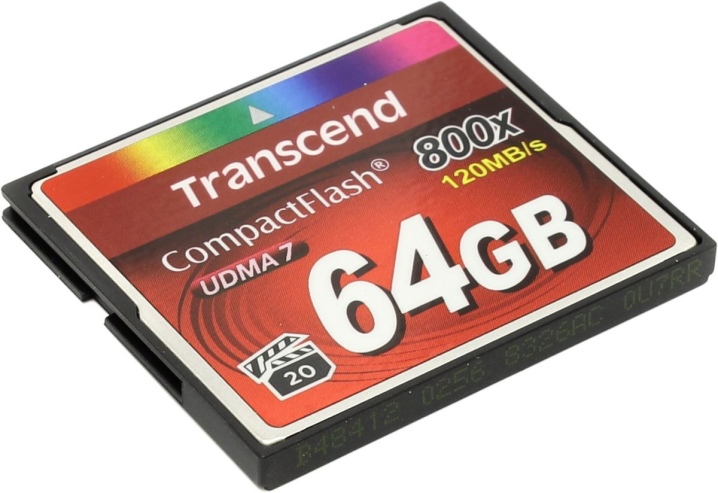
- Sandisk Extreme Pro Compact Flash 160MB / S 64GB - the best speed. The most expensive in the rating (over 5.5 thousand rubles), but excellent for burst shooting.

Which one to choose?
First of all, you should understand that flash drives of different standards have different sizes and shapes. If your camera is not designed for a specific drive, then you either won't put it in the slot at all, or it will fail there. Therefore, you only need to choose the standard for which your camera is designed. But the characteristics do not end there, it is worth paying attention to a few more points.
- Storage capacity is a factor that is obvious even to a beginner. The more memory you have, the more you can take pictures and shoot, but you need to be able to stop in time so as not to overpay. With the improvement of the quality of photos, the "weight" of each photo also grows, but if the average JPEG lasts 3-4 MB, then simultaneous saving in JPEG and RAW will take up to 100 MB. Just one short 4K video can take up several gigabytes. In a word, modern experts no longer advise paying attention to media with a volume of less than 16 GB, but it is better to immediately purchase 32 GB.
A professional DSLR requires an even larger memory card.

- Data processing parameters. Again, the faster the better, but it doesn't always make sense to overpay for top performance. For video in HD quality, you need a speed of 6 Mb / s, and this is class "6" and higher (for most manufacturers) or Ultra II (for SanDisk). For long videos in good quality, be guided by standards not lower than U1 (10 Mb / s), but better still higher. For 4K video, you need U3 (30 Mb / s), and for professional equipment - three times higher speed. If the choice of standards is difficult for you, please note that the manufacturer is obliged to indicate the real write and read speed - look for these data on the packaging.

- Degree of protection. You can take a flash drive unprotected, but then it should be protected from temperature changes, drops, moisture and magnetic radiation. Also, do not remove the drive from equipment that continues to work at this time. However, an unprotected memory card, even with careful handling, can be damaged, for example, when scanning baggage at the airport. For this reason, it is sometimes better to spend money and take the most secure memory card.
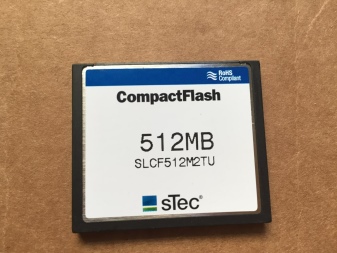
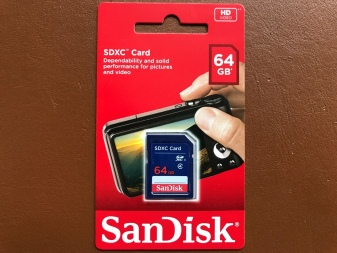
- Manufacturer. The good name of the manufacturer is not taken out of thin air - since the company is well-known and popular, it means that it knows its business. SanDisk has been the leader in consumer appeal for many years - with good quality, you won't pay too much. In addition to this company, there are several other worthy, but not grown to the title of a leader, firms - these are Kingston, Transcend, Samsung.
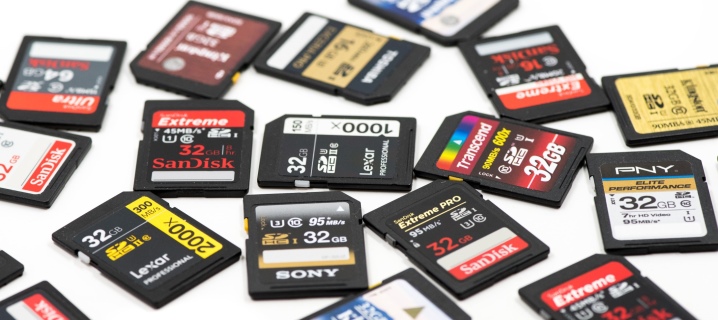
For information on which memory card to choose for your camera, see below.













The comment was sent successfully.